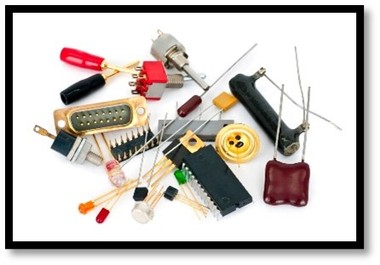☰ Menu
Menu

There are a multitude of components used in electronic manufacturing. From diodes to connectors and PGAs, each electronic component carries out a specific function used for a variety of purposes. Read on as we discuss the importance of component identification.
Through-Hole Components
Through-hole components have leads that are placed through the mounting holes on a circuit board. There are two main types of through-hole components, and they are axial and radial. Axial components have one lead on each side of the component body, like arms. The arms must be bent in order to be inserted through the holes on a circuit board. Radial components have two or more legs extending from the bottom of the component body.
Surface Mount Components
Surface mount components are created to be mounted precisely on the printed circuit board (PCB). Unlike through-hole, surface mount components can consist of both leaded and leadless. Some commonly used surface mount part includes chip resistors, ceramic capacitors, diodes, and transistors. The leaded surface mount components consist of one of the following styles: gull wing, j-lead, l-lead, flat lead, and I-lead. On the other hand, the leadless components do not have metal leads protruding out of the component body. Instead, you may see terminals, terminations, castellations, and ball grid arrays.
Identification of the Component
Every component contains a specific marking either on the body or stated on the packaging. The specific mark or code will contain the manufacturer’s unique part number, value and tolerance, polarity, and color-coded bands to indicate resistance. Knowing this information regarding component identification comes in handy when reviewing the bill of martials (BOM) list or other assembly drawings. The BOM will contain a list of components by part numbers, quantities, and reference designator. Reference designators indicate a specific location for each component to be placed on the board.
Polarity vs Position
The components used on a printed circuit board (PCB) have their own specific function. Polarity of a component involves having both positive and negative connections. The positive (+) end is known as the anode, and the negative (-) connection is called a cathode. On a PCB, you will see a “+” or “-“sign. This indicates the proper installation of the component.
Component orientation or position has to do with the component being installed a certain way. Some components such as SOCICs or QFPs will contain orientation marks or symbols on the body. Markings will consist of a notch, dimple, wedge, stripe, or numbers. These symbols help indicate where the first pin starts so the component will be placed on the board correctly.
At EEI, we teach the importance of component identification not only to our operators, but to our students. We offer customizable courses for companies and can incorporate component identification training. For more information call EEI today!